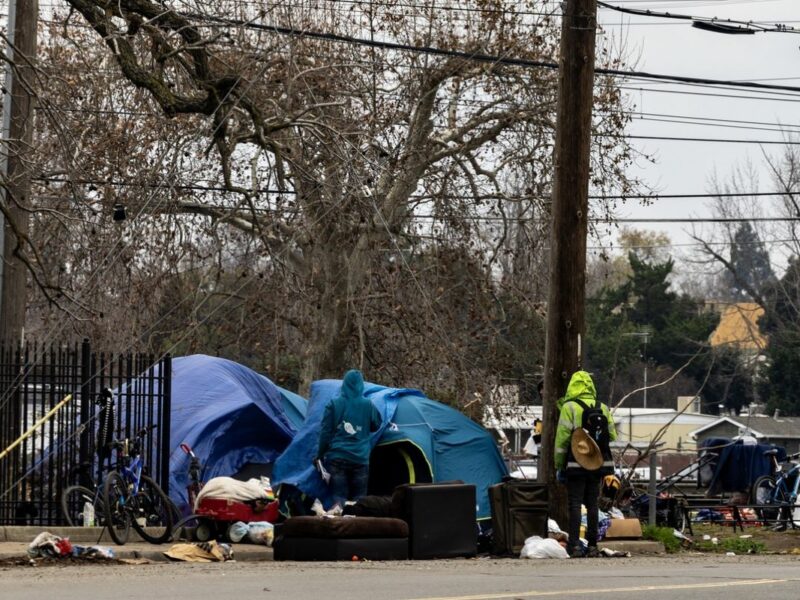Permanent Supportive Housing Benefits Taxpayers, Homeless People, and Housed Communities Alike
Santa Monica’s stunning south-side shoreline attracts people from all walks of life. It’s easy to get swept up in the scenery there. The soft rolling waves and swank bohemian storefronts along the Venice Beach boardwalk and pier draw approximately 16 million tourists annually.
But for some locals, life along the legendary coastline is certainly no vacation.
“I’ve been homeless most of my life, so I grew up on the street,” explained Chad, a Venice Beach man who cordially agreed to be interviewed by Invisible People.
Chad, who became homeless at the tender age of 9 and endured horrific abuse, is symbolic of a familiar but often hidden saga stretching from coast to coast and all across the country – the saga of homelessness. Perhaps the most tragic part of Chad’s story is the fact that it is typical.
The LA Alliance for Human Rights reports that approximately 1 out of every 40 Venice Beach residents is homeless, a number that is increasingly garnering public concern.
While stories like Chad’s momentarily touch our hearts, we often brush them off as hopeless. Sure, it would be nice if everyone had a home sometime in the future, but something tells us the goal is lofty, bordering on unrealistic.
Since most of us have never envisioned a world where homelessness didn’t exist, we also haven’t considered the countless positive communal effects solving homelessness might have.
A world without homelessness would mean more communal funding. It would mean better school systems and lower healthcare prices. It would alleviate many of the problems creating the current atmosphere of extreme rent burden and making homeownership nearly impossible.
A world without homelessness would significantly improve social welfare and public health. But these things are rarely considered because we can’t imagine eliminating homelessness or even seriously reducing the crisis.
Homelessness, we are told, is a complicated problem too difficult to solve. The good news is that statement is false.
There are proven strategies in place that are known to reduce homelessness. Communities have achieved a functional zero level of homelessness with strategies that could be implemented across the board. If supported by the public, these solutions could save countless lives, not to mention taxpayer dollars, creating a win-win scenario for practically everyone involved except a handful of corporate real estate investors and shifty politicians.
One of the most successful of these strategies is providing permanent supportive housing. Here’s why providing permanent supportive housing is an exceptional solution for homeless people, taxpayers, and housed communities alike…
Permanent Supportive Housing Reduces Economic Strain without Any Negative Social Impact
A 2020 analysis released by Lancet Public Health reviewed 15 studies across 41 publications that dealt with permanent supportive housing and an additional ten studies across 15 publications where the topic was income intervention. The goal of reviewing this research was to determine the long-term efficacy of strategies like Housing First, which prioritize providing permanent supportive housing options.
According to that systematic review, permanent supportive housing is proven to produce all of the following positive outcomes without having any notable negative social impact:
- General reduction of homelessness
- Sustained long-term housing stability
By doing so, these methods also produced:
- Improved public health outcomes
- Increased social well-being
- A net savings of taxpayer dollars – $20,548 of net savings was achieved when temporary financial assistance was used as a form of homeless intervention.
This study, which was the first of its kind, concludes that permanent supportive housing strategies ultimately produced housing stability over a 6-year timespan.
While strategies like Housing First can reduce or even eliminate homelessness and the societal ills it causes, researchers claim these programs need public and political support to be successful. To quote the paper directly, the researchers stated, “The extent to which permanent supportive housing can be regarded as providing value for money is dependent on the willingness of governments to pay for the achieved housing outcomes.”
Experts Support Housing First as an Evidence-Based Model for Reducing Homelessness
In an exclusive discussion with Invisible People staff, Kim Johnson, who serves as the Manager of Public Policy for the National Low Income Housing Coalition, provided the following insight:
“Permanent supportive housing – a program model that follows the Housing First approach – is a proven solution to ending homelessness. Evidence from multiple rigorous studies indicates that Housing First programs decrease homelessness, increase long-term housing stability, and improve quality of life and community integration for people experiencing homelessness,” Kim said. “Permanent supportive housing is also a cost-effective solution, shown to reduce healthcare, criminal legal system, and other public costs.”
While temporary and punitive solutions to homelessness are pushed on an unknowing public, proven cost-effective and generally effective strategies are taking a back seat.
One glaring example is that of Housing First.
“Housing First is the most effective approach for ending homelessness,” explained Kim. “But for Housing First to have the greatest impact, it must be part of broader efforts to address the affordable housing crisis. To fully address our country’s housing and homelessness crises, Congress must provide the significant, long-term investments needed to make rental assistance universally available, preserve and expand the existing affordable housing stock, fund a permanent emergency rental assistance program, and implement robust tenant protections.”
If You Wish to Improve the Quality of Life for Everyone in Your Community, Urge Your Local Legislators to Endorse Permanent Supportive Housing Strategies.
You can live in a house and still be adversely affected by homelessness even if you don’t know a single homeless person. Homelessness is a crisis that continues to put a strain on our country’s healthcare, welfare, and education systems. It is an unnecessary, uncomplicated evil that doesn’t have to exist.
Whether your goal is reducing healthcare costs or increasing community funding, whether you wish to unburden the current criminal justice system or simply improve social welfare, all of these things can be accomplished by reducing homelessness and ultimately banishing this condition.
Please urge your legislators to save lives, money, and communities by endorsing permanent supportive housing strategies today.











